- Top Employee Onboarding Software
- Why Use Employee Onboarding Software?
- Key Features of Effective Onboarding Software
- How To Choose The Right Onboarding Software?
- Which is the Best Onboarding Software?
- Frequently Asked Questions (FAQs)
- What Is Upskill And Reskill?
- Difference Between Reskilling And Upskilling
- Upskilling for Workplace Advancement
- Reskilling for Career Transformation
- Crafting Successful Upskill and Reskill Strategies
- Upskill And Reskill Strategizing: Things to Keep in Mind
- Measuring the Impact of Skill Development Initiatives
- Frequently Asked Questions
- What’s a Skill Gap?
- Employee Skill Gap Analysis: Why Do We Need It?
- How To Conduct Employee Skill Gap Analysis?
- Addressing Skill Gaps Through Training and Hiring
- Utilizing Skills Gap Analysis for Strategic Planning
- Leveraging Employee Skill Gap Analysis: Things To Keep In Mind
- Frequently Asked Questions
- Transformative Role of AI in Talent Acquisition
- Impact of AI on Business Recruiting
- Overcoming Challenges in AI-Driven Talent Acquisition
- Starting with AI in Talent Acquisition
- Future Landscape of AI in Talent Acquisition
- Frequently Asked Questions
- HR In The Hot Seat - Challenges With Evolving Workforce
- Mastering Effective HR Management: Tips For Overcoming Challenges
- Summing Up
- The Future of HR: Key Trends for 2024
- Skill-Based Hiring
- Prioritizing Employee Experience, Engagement & Well-being
- AI-Empowered Workforce Evolution and Its Impact
- Taking Diversity, Equity, and Inclusion Beyond Mandates
- Hybrid and Remote Work
- Embracing the Gig Economy and Blended Workforce
- Transparent HR Practices
- Climate Change Adaptation in HR Practices
- Leveraging HR Analytics for Data-Driven Decisions
- Continuous Learning & Development to Improve Productivity
- The Office Buzz in 2024
- Bottom Line - HR Operating Model Needs A Shift
- Importance and Impact of Recognizing Employee Birthdays
- Professional Birthday Wishes for Employees (All Experience Levels)
- Personalized Birthday Wishes for Employees in Different Roles
- Fun Birthday Wishes for Employees (with Templates)
- Birthday Wishes for Remote Employees
- Heartfelt Birthday Wishes for Employees
- Belated Birthday Wishes for Employees
- Simple & Sweet Birthday Wishes for Employees
- Celebrating Employee Birthdays: Ideas and Traditions
- Tips and Ideas for Sending Birthday Wishes to Employees
- Closing Thoughts
- Frequently Asked Questions
- What Is An Employee Referral?
- Benefits of Implementing Employee Referral Programs
- Setting Up an Effective Employee Referral Program
- Employee Referral Email
- Employee Referral Scheme
- Overcoming Challenges of Employee Referrals
- Companies with Best Employee Referral Programs
- Employee Referral Programs: Best Practices
- Closing Thoughts
- Frequently Asked Questions (FAQs)
- Importance of Team Building Activities
- Types of Team Building Activities
- Outdoor Team Building Activities for Employees
- Indoor Team Building Activities for Employees
- Easy Team Building Activities for Remote Employees
- Team Building Activities For New Employees (Icebreakers)
- Fun Team Building Activities for Different Goals
- To Boost Communication and Collaboration
- To Reduce Stress Levels and Promote Well-being
- Aligning Team Purpose and Values with Strategic Activities
- Final Remarks
- Frequently Asked Questions
- Importance of Employee Appreciation Quotes
- Work Appreciation Quotes for Employees
- Employee Appreciation Quotes for Hard Work Recognition
- Employee Appreciation Quotes for Teamwork and Collaboration
- Appreciation Quotes for Celebrating Employee Anniversaries and Milestones
- Employee Appreciation Quotes for Strong Work Ethics
- Employee Appreciation Quotes for Project & Goal Completion
- Employee Appreciation Quotes for Quality of Work
- Employee Appreciation Quotes for Creativity and Innovation
- Appreciation Quotes for Managers
- Peer-to-Peer Employee Appreciation Quotes
- Appreciation Quotes for Employees Leaving the Company
- Employee Appreciation Quotes for Thoughtful Gestures
- Funny Employee Appreciation Quotes
- Short Employee Appreciation Quotes
- Employee Appreciation Quotes for Different Roles
- Employee Appreciation Quotes for Senior Leadership
- Creative Ways to Use Employee Appreciation Quotes
- Summary
- Frequently Asked Questions (FAQs)
- What is Employee Satisfaction?
- Importance of Employee Satisfaction
- Objectives of Employee Satisfaction
- Employee Satisfaction vs. Employee Engagement
- Key Reasons for Employee Dissatisfaction
- Strategies for Improving Employee Satisfaction
- Ways to Measure Employee Satisfaction
- Best Practices for High Employee Satisfaction
- Final Remarks
- Frequently Asked Questions (FAQs)
- How to Craft Effective Employee Appraisal Comments
- Key Areas to Focus in Performance Review
- Comments On Hard Work & Dedication
- Assessing Interpersonal Skills
- Evaluating the Ability to Collaborate & Work in Teams
- Gauging Punctuality
- Commenting on Communication Style
- Reviewing Time Management and Productivity
- Leadership in Performance Appraisals
- Assessing Creativity & Innovation
- Evaluating Problem-Solving Abilities
- Recognizing Flexibility and Dependability in Reviews
- Employee Appraisal Comments for Different Roles
- Summary
- Frequently Asked Questions (FAQs)
- Employee Grievance Meaning
- Importance of Employee Grievance Process
- Types of Workplace Grievances
- Reasons for Employee Grievances
- Employee Grievance Procedure
- Steps in the Employee Grievance Handling Process
- Employee Grievance Form Example
- Final Remarks
- Frequently Asked Questions (FAQs)
- What is Company Culture?
- Importance of Company Culture
- Types of Company Culture
- Factors Contributing to Organizational Culture
- Assessing & Developing Corporate Culture
- Company Culture - It’s not just Perks or Feels
- Good Company Culture Examples
- Developing Company Culture: Best Practices
- Closing Thoughts
- Frequently Asked Questions (FAQs)
- What is Employee Empowerment?
- Benefits of Empowering Employees
- Employee Empowerment vs. Micromanagement
- Strategies for Effective Employee Empowerment
- Role of Managers in Fostering Empowerment
- Organizational Structure Supporting Empowerment
- Overcoming Barriers to Employee Empowerment
- Frequently Asked Questions (FAQs)
- What is Employer Branding?
- Importance of Employer Branding Strategy
- How to Build an Employer Branding Strategy?
- Strategies for Building a Strong Employer Brand
- How to Measure and Boost Your Employer Branding Success?
- Examples of Strong Employer Brand Strategy
- Best Practices for an Effective Employer Branding Strategy
- Closing Thoughts
- Frequently Asked Questions (FAQs)
- What are Employee Wellness Programs?
- Importance of Employee Wellness Programs
- Examples of Employee Wellness Programs
- Real-Life Examples of Corporate Wellness Programs
- Strategies for Encouraging Participation
- Supporting Diverse Employee Needs
- Creating Comprehensive Wellness Programs
- Measuring the Impact on Business and Employees
- Closing Thoughts
- Frequently Asked Questions (FAQs)
- What is Talent Management?
- Developing a Winning Talent Management Strategy
- Models and Frameworks
- Tips for Framing Effective Talent Management Strategy
- Looking Ahead: Recent Trends in Talent Management
- Frequently Asked Questions
- Role of AI in HR: Addressing Common Challenges
- Artificial Intelligence in HR Processes
- AI Tools for HR Functions
- How to Adopt AI in HR?
- Addressing Challenges of AI in HR
- Ethical and Responsible AI Use
- The Future of AI in HR
- Closing Thoughts
- Frequently Asked Questions
- What is Performance Management?
- Elements of Effective Performance Management
- Performance Management Cycle
- Differentiating Performance Management
- Benefits of Performance Management With Examples
- Challenges faced in Performance Management and their Solutions
- Future Trends in Performance Management
- Frequently Asked Questions
- Changing Role of HRM
- Changing Role Of HR Manager
- Technology and the Changing Role of HRM
- The Rise of AI and Machine Learning in HR
- Mobile Technology's Impact on HR Practices
- The Significance of People Analytics in HR
- Navigating the Future of HR Technology
- Final Remarks
- Frequently Asked Questions
- Compensation Management Meaning
- Compensation Types
- Breaking Down The Compensation Management Process
- HR Software for Compensation Management
- Current Trends in Compensation Management
- Frequently Asked Questions
- Defining Flexible Work Arrangements
- Flexible Working: Advantages for Businesses
- Challenges of Flexible Work Arrangements
- Crafting Flexible Working Practices
- Types Of Flexible Work Arrangements
- Comparing Flexible Work Arrangements
- Real-Life Examples of Flexible Work Arrangements
- Final Remarks
- Frequently Asked Questions
- Conflict Resolution Meaning
- Conflict Origins
- Tried & Tested Conflict Resolution Strategies
- Methods of Conflict Management at Workplaces
- Conflict Resolution Strategies: Top Management Tips
- Summary
- Frequently Asked Questions
- Career Development Meaning
- Career Development Plan for Employees
- Career Development in HRM: Growth Ideas For Employees
- Issues in Career Development and Their Solutions
- Closing Thoughts
- Frequently Asked Questions
- Understanding Compensation
- Exploring Benefits
- Difference between Compensation and Benefits
- Compensation & Benefits Structure
- Final Remarks
- Frequently Asked Questions
- Defining Recruitment in HR Practices
- Exploring Talent Acquisition in HR
- Understanding Talent Acquisition vs Recruitment
- When to Recruit or Acquire Talent
- Talent Acquisition vs Recruitment: Responsibilities
- From Recruitment To Talent Acquisition
- Closing Thoughts
- Frequently Asked Questions
- Work Culture Meaning
- Types of Work Cultures
- Components of Culture
- Best Work Culture Examples Set By Top Companies
- Creating a Positive Work Culture
- Closing Thoughts
- Frequently Asked Questions
- Defining Learning vs Development
- Importance of Learning and Development
- L&D Activities for Employees
- Choosing the Right L&D Activities
- Crafting an Effective L&D Strategies
- Aligning L&D Strategy with Business Goals
- Designing Engaging Learning Journeys
- Learning and Development Process: KPIs
- ROI in Learning and Development
- Emerging Trends in L&D
- Closing Thoughts
- Frequently Asked Questions
- What Is Leadership Development?
- Key Skills for Leaders
- How To Develop Leadership Skills in Organizations?
- What Is A Leadership Development Program?
- How To Develop A Leadership Development Program?
- Example of A Leadership Development Plan
- Benefits of Leadership Development Training
- Frequently Asked Questions
- Defining Diversity Training
- Importance of Diversity Training
- What are the Types of Diversity?
- Types of Diversity Training Methods
- Diversity Training Activities
- Choosing A Diversity Training Program
- How to Implement Diversity Initiatives
- Best Diversity Training Programs (Real-Life Examples)
- Improving the Effectiveness of Diversity Training
- Tracking and Evaluating the Results of DE&I Training Efforts
- Essential Elements for Successful Diversity Training
- Closing Thoughts
- Frequently Asked Questions
- Defining Occupational Health & Safety
- Evolution of Workplace Health and Safety
- Identifying Common Workplace Hazards
- Global Impact on Occupational Health & Safety
- Managing Employee Health and Safety Risks
- Occupational Health and Safety Problems
- Future of Occupational Health and Safety
- Frequently Asked Questions
- Employee Orientation Defined
- Employee Onboarding Explained
- Orientation and Onboarding: Understanding the Difference
- Importance of Orientation and Onboarding
- Crafting Comprehensive Integration Strategies
- Quick Tips for Orientation and Onboarding
- Frequently Asked Questions
- What is HR Metrics?
- Importance of HR Metrics
- HR Metrics Examples in Recruitment
- HR Metrics Examples in Employee Retention
- HR Metrics Examples in Revenue
- Other Common HR Metrics
- Soft HR Metrics Example
- HR Metrics Formula
- Utilizing HR Metrics Effectively
- Future of HR Metrics
- Summary
- Frequently Asked Questions
- Defining Decision Making Process
- Key Concepts In Decision Making
- Decision Making & Problem Solving
- Tips For Improving Decision Making Skills
- Selected Practice Questions & Answers
- Conclusion
- Frequently Asked Questions (FAQs)
- A case(s) of miscommunication
- The devil is in the (resume) details
- One for the complaints!
- What is an Exit Interview?
- Benefits of Exit Interviews to an Organization
- How to Conduct Exit Interviews?
- Exit Interview: Sample Questions to Ask
- Overcoming Challenges of Exit Interviews
- Exit Interviews: Best Practices
- Closing Thoughts
- Frequently Asked Questions
- Technology in the Workplace
- Benefits of Tech Integration
- Technology in the Workplace: Key Functions
- How Technology Normalized Remote Work
- Workplace Technology: Top Tools and Software
- Steps for Effective Technology Implementation
- Overcoming Tech Implementation Challenges
- Ethical Considerations in Tech Use
- Keeping Pace with Tech Trends
- Closing Thoughts
- Frequently Asked Questions
- What is Ethical Leadership?
- Principles of Ethical Leadership
- Difference between Ethics and Integrity
- Importance of Ethical Leadership
- Ethical Leadership in Practice
- Overcoming Challenges
- Frequently Asked Questions
- Embracing Change Management
- Mastering People Analytics
- Enhancing Stakeholder Relationships
- Navigating Diversity, Equity & Inclusion
- Upholding Ethics and Data Privacy
- Developing Critical Thinking
- Advancing Negotiation Techniques
- Fostering Inter-departmental Collaboration
- Building Resilience in HR
- Frequently Asked Questions
- What is Mental Health?
- Benefits of a Mentally Healthy Workforce
- Prioritising Mental Health: Creating a Culture of Support
- Final Remarks
- Frequently Asked Questions
- Gen Z vs Millennials - What is the difference?
- Retain and Engage Gen Z Employees: Need and Strategies
- Strategies to Retain and Engage Gen Z Employees
- Rethinking Requirements
- Final Remarks
- Frequently Asked Questions
- Understanding Millennial Leadership Needs
- Key Leadership Skills for Millennials
- How To Develop Millennial Into Leaders
- Additional Strategies to Develop Leaders
- Learning Preferences of Millennials
- Benefits of Investing in Millennial Leaders
- Closing Thoughts
- Frequently Asked Questions
- Understanding Fluff
- Examples of Interview Fluff
- Identifying Interview Fluff
- Addressing Interview Fluff
- Seeing Through the Fluff
- Frequently Asked Questions
- What is the Gender Pay Gap?
- Is the Gender Pay Gap Real?
- Factors Affecting the Gender Pay Gap
- How Age Impacts Women’s Earnings
- The ‘Motherhood Penalty’
- Education's Role in Wage Differences
- Racial and Ethnic Disparities in Pay
- Closing the Gender Gap
- Frequently Asked Questions
- Top Weirdest Late-To-The-Office Excuses
- The Fine Art of Balancing Wit and Wisdom in HR
- Understanding Social Media Recruiting
- Crafting Your Social Media Recruitment Strategy
- Implementing Your Strategy Effectively
- Popular Platforms for Recruitment
- Navigating the Downsides of Social Media Recruiting
- Measuring Success and Adjusting Strategy
- Summary
- Frequently Asked Questions
- Who Is A High Potential (HIPO) Employee?
- Characteristics of A High Potential (HIPO) Employee
- High Potential Employee Identification
- Grooming High Potential Employees
- Why High Potential Employees Leave
- How Do You Retain High Potential Employees?
- High Potential Employee Development: Best Practices
- Closing Thoughts
- Frequently Asked Questions
- What is Digital Fluency?
- Why Digital Fluency Matters?
- Difference between Digital Literacy and Digital Fluency
- Key Components of Digital Fluency
- Achieving Digital Fluency
- Overcoming Challenges
- Future of Workforce Digital Fluency
- Frequently Asked Questions
- What is Loud Quitting?
- Pros and Cons of Loud Quitting
- Reasons Behind the Trend
- Analyzing the Impact
- How HR Can Navigate the Loud Quitting Uproar
- Preventive Strategies
- Closing Thoughts
- Frequently Asked Questions
- Defining Emotional Intelligence in HR
- Why Emotional Intelligence Matters for HR Leaders
- How To Build Emotional Intelligence in HR
- Integrating EQ into HR Practices
- Impact of EQ on Company Culture
- Emotional Intelligence in HR: Major Challenges
- Final Remarks
- Frequently Asked Questions
- Understanding Internal Job Posting
- Internal Job Posting: Pros and Cons
- The Internal Job Posting Process
- Writing Effective Ads for Internal Job Posting
- Strategies for Success of Internal Job Posting
- Summary
- Frequently Asked Questions
- Understanding Workplace Bias
- Common Types of Bias in HR
- Closing Thoughts
- Frequently Asked Questions
- What is a Dry Promotion?
- Dry Promotion: Pros and Cons for Companies
- Impact of Dry Promotion on Employee Retention
- Preventing Talent Loss After Dry Promotions
- Closing Thoughts
- Frequently Asked Questions
- What Is A Stay Interview?
- Importance Of Stay Interviews
- Benefits And Challenges Of Stay Interviews
- Planning And Conducting Stay Interviews
- Stay Interviews: 20 Sample Questions To Ask
- Best Practices For Effective Stay Interviews
- Summary
- Frequently Asked Questions
- Who Is A Boomerang Employee?
- Reasons For Returning
- Benefits Of Hiring Boomerang Employees
- Challenges Of Rehiring
- Interviewing Boomerang Candidates: Sample Questions
- Enhancing The Hiring Process
- Making Informed Decisions
- Final Remarks
- Frequently Asked Questions
- Talent Pipeline Meaning
- Significance of Talent Pipelines
- Advantages of a Talent Pipeline
- Building a Talent Pipeline
- Maintaining a Talent Pipeline
- Attracting Top Talent
- Implementing the Strategy
- Frequently Asked Questions
- What is Micromanagement?
- Recognizing Micromanagement
- Leadership versus Micromanagement
- Keeping Micromanagement in Check
- Beyond Micromanagement
- Summing Up
- Frequently Asked Questions
- Recognizing Signs Of A Bad Hire
- Understanding The Impact On Teams
- Dealing With A Bad Hire
- Preventing Future Bad Hires
- Closing Thoughts
- Frequently Asked Questions
- Defining Neurodiversity
- Importance of Neurodiversity in the Workplace
- Moving Towards Inclusive Environments
- Final Remarks
- Frequently Asked Questions
- Understanding the Generation Gap
- Multigenerational Workforce: Debunking Stereotypes
- Strategies for Bridging the Gap
- Benefits of a Multigenerational Workforce
- Final Remarks
- Frequently Asked Questions
- Defining Productivity Theatre: All Show, No Go
- 5 Key Drivers of Fake Productivity
- Solutions to Combat Productivity Theatre
- Summary
- Frequently Asked Questions
- Defining Grumpy Staying
- Why do Grumpy Stayers not Leave?
- Recognizing the Signs
- Exploring the Causes
- Understanding the Impact
- Addressing the Issue
- Taking Action: Addressing Grumpiness with Empathy
- After the Conversation
- When Grumpy Staying Continues
- Closing Thoughts
- Frequently Asked Questions
- The Rationale Behind Office Peacocking
- Impact on Company Culture
- Impact on Employees
- Case Studies: Examples of Office Peacocking
- The Downside: Potential Pitfalls of Office Peacocking
- Practical Tips for Implementing Office Peacocking
- Frequently Asked Questions
- 13 Common Mistakes Young Managers Make
- Strategies To Avoid Mistakes (Individual Growth)
- How Young Managers Can Boost Teamwork
- Learning From Errors
- Summary
- Frequently Asked Questions
- Understanding Great Regret - What causes the shift shock?
- Impact of Great Regret
- How can HR help make the situation better?
- Closing Thoughts
- Frequently Asked Questions
- Understanding the HR Budget
- Key Components of an HR Budget
- Preparing an HR Budget Step-by-Step
- Importance of HR Budgeting in Management
- Final Remarks
- Frequently Asked Questions
- What are Pre-Employment Assessments?
- Importance of Pre-Employment Testing
- Types of Pre-Employment Assessments
- 15 Tips for Creating Effective Pre-Employment Assessments
- Closing Thoughts
- Frequently Asked Questions
- Exploring the Productivity Paradox
- Understanding the Impact of Solow Paradox
- Productivity Paradox: Why it Matters for Recruiters & HRs
- Identifying Causes and Challenges
- Strategies for Enhancing Productivity
- AI & the Modern-Day Productivity Paradox
- Beyond Technology: Building a Productive Workforce
- Summary
- Frequently Asked Questions
- Understanding the Great Reshuffle 2.0
- Preparing Leaders for the Change
- HR’s Role in Handling Great Reshuffling 2.0
- The Way Ahead
- Frequently Asked Questions
- Definition Of Managerial Grid
- Managerial Grid Theory Explained
- Application Of Managerial Grid
- Criticisms And Limitations
- Evolution And Contemporary Perspectives
- Integrating Managerial Grid With Other Models
- Practical Steps For Implementing Managerial Grid
- Conclusion
- Frequently Asked Questions
- Understanding Skills Taxonomy
- Why do we Need Skills Taxonomy?
- Benefits of Skills Taxonomy
- Components of Skills Taxonomy
- Building a Skills Taxonomy: A Step-by-Step Guide
- Skill Taxonomies vs Intelligence Tools
- Closing Thoughts
- Frequently Asked Questions
- Definition Of Team Building
- Stages Of Team Development
- Top 10 Strategies For Effective Team Building
- Team Building Activities
- Best Practices For Effective Team Building
- Setting Team Building Objectives
- Challenges In Team Building
- Conclusion
- Frequently Asked Questions (FAQs)
- Defining Job Shadowing
- Unpacking the Benefits
- Setting Up the Experience
- Job Shadowing vs Internship
- Dos and Don'ts for HR Professionals
- Closing Thoughts
- Frequently Asked Questions
- Employee Journey Mapping: Meaning & Importance
- Stages of the Employee Journey
- Steps for Effective Mapping
- Employee Journey Map: Where does it begin?
- Employee Journey Map: Template
- Best Practices & Tips
- Summary
- Frequently Asked Questions
- Why are Performance Appraisals needed?
- Evolution of Performance Management
- Modern Performance Practices
- Benefits of Modern Performance Appraisals
- The Future
- Frequently Asked Questions
- Is Experience the Sole Indicator of Success?
- Why Hire Inexperienced Talent?: Key Advantages
- Skills to Look For in Inexperienced Talent
- Challenges and Considerations in Hiring Inexperienced Talent
- Final Remarks
- Frequently Asked Questions
- What is a Company Retreat?
- Company Retreat Ideas: Team-Building & Exploration
- Relaxation and Celebration
- Planning Your Retreat: Things to Keep in Mind
- Closing Thoughts
- Frequently Asked Questions
- Understanding HR Forecasting
- HR Forecasting Key Concepts
- Steps for Implementing HR Forecasting
- Common HR Forecasting Methods
- Closing Thoughts
- Frequently Asked Questions
- What is ESG?
- HR and ESG - Why Care?
- ESG in HR Strategy
- Challenges for HR
- Future of ESG in HR
- Frequently Asked Questions
- Defining the Great Betrayal
- Reasons for Its Spread
- Impact on Workers
- Impact on Corporations
- Rebuilding Trust & Valuing Employees
- Closing Thoughts
- Frequently Asked Questions
- Importance of Clear Expectations
- Setting Expectations Early
- Communicating Expectations Effectively
- Differentiating Expectations
- Reviewing and Adjusting Expectations
- Summing Up
- Frequently Asked Questions
- Understanding KRA Frameworks And Models
- KRAs vs KPAs and KPIs
- Monitoring and Tracking KRAs
- KRAs in Various Roles
- Impact of KRA Frameworks and Models on Organizational Success
- Frequently Asked Questions
- Where: The Place of Work
- When: The Time of Work
- How Much Work: Alternate Employment Models
- Who Does the Work: Intelligence
- Designing Organizations with the Four Dimensions of Work
- Summing Up
- Simplifying Processes: The Foundation of Efficiency
- Reducing Unnecessary Meetings: Reclaiming Valuable Time
- Building Strong Accountabilities: Ensuring Responsibility
- Role of HR in Addressing Inefficiencies
- Continuous Improvement: A Commitment to Excellence
- Leadership's Role in Driving Efficiency
- Conclusion: A Holistic Approach to Efficiency
- Understanding Financial Freedom
- Benefits of Empowering Employees Financially
- Empowering Employees Through Financial Literacy
- Financial Topics That Need Attention Based On Career Stage
- Summing Up
- Frequently Asked Questions
- Defining Employee Voice
- Benefits of Amplifying Employee Voice
- Strategies and Tools
- Encouraging Participation
- Closing Thoughts
- Frequently Asked Questions
- Appraisal Blues: Signs of Unhappy Employees
- Addressing Unhappiness Post-Appraisal
- Non-Monetary Solutions for Dissatisfied Employees
- Summing Up
- Frequently Asked Questions
- Women in the Middle Eastern Workforce
- Importance of DEIB
- Role of HR in Building Inclusive Workplaces for Women
- Measuring Inclusion Progress: Key Metrics
- Closing Thoughts
- Frequently Asked Questions
- Preparing for the Conversation
- Conducting the Conversation
- Best Practices for the Talk
- After the Conversation
- Helping Employees Grow
- Frequently Asked Questions
- Understanding HR Exhaustion
- Factors Leading To HR burnout
- Impact Of HR Burnout
- Strategies To Prevent And Manage HR Burnout
- Role Of Technology In Preventing Burnout
- Celebrating HR Successes
- Summary
- Frequently Asked Questions
- Common Mistakes When Hiring Young Talent
- Building Connections with Candidates
- Summary
- Frequently Asked Questions
- Walking a mile in the employee’s shoes
- Conducting Humane Layoffs
- Remote Layoffs Management
- Supporting Laid-off Workers
- Managing the Aftermath
- Wrapping Up
- Frequently Asked Questions
- Importance of Shortening Time-to-Hire
- Shortening Hiring Time: Pre-Application Stage
- Reducing Hiring Time: Application Stage
- Hacks to Shorten Hiring Time: Interview Stage
- Reducing Hiring Time: Offer Stage
- 5 Other Important Hacks & Strategies
- Final Remarks
- Frequently Asked Questions
Emerging Trends In HR In 2025: Key Insights For Success
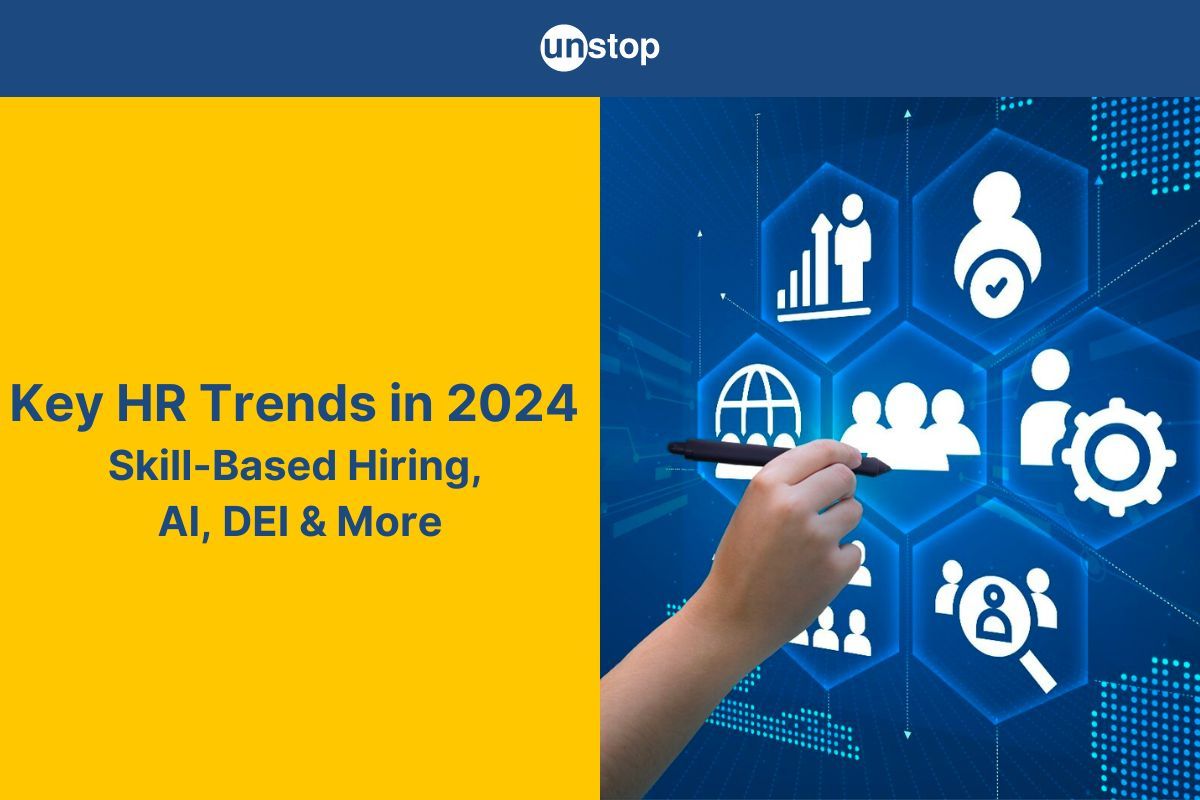
What will work look like in 2024? Currently, the workplace includes a mix of hybrid work culture, technological advancements, and a workforce comprising three generations with distinct working styles - the Baby Boomers, Millennials and Gen Zs.
This finding from the 2023 PwC Global Workforce Hopes & Fears Survey highlights the stark disparities in attitudes of different generations. As per the survey,
“Younger generations are much more likely to expect AI to impact their careers across all of the surveyed impacts, both positive and negative, whereas a little over one-third (34%) of Baby Boomers think AI will not impact their careers, only 14% of Gen Z and 17% of Millennials agree.”
To effectively navigate the changing needs of a workforce, talent recruiters need to understand and adapt to emerging trends in HR in 2024. By staying informed about these emerging trends, HR professionals can proactively adapt their practices to meet the evolving needs of their company and employees.
The Future of HR: Key Trends for 2024
Between the lingering effects of the pandemic and the upcoming technological advancements, the emerging trends in HR in 2024 are centered around the idea of bridging the gap between the have and have-nots, i.e., revolutionizing hiring and retention practices to improve candidate experience, boost employee engagement, and enhance overall productivity.
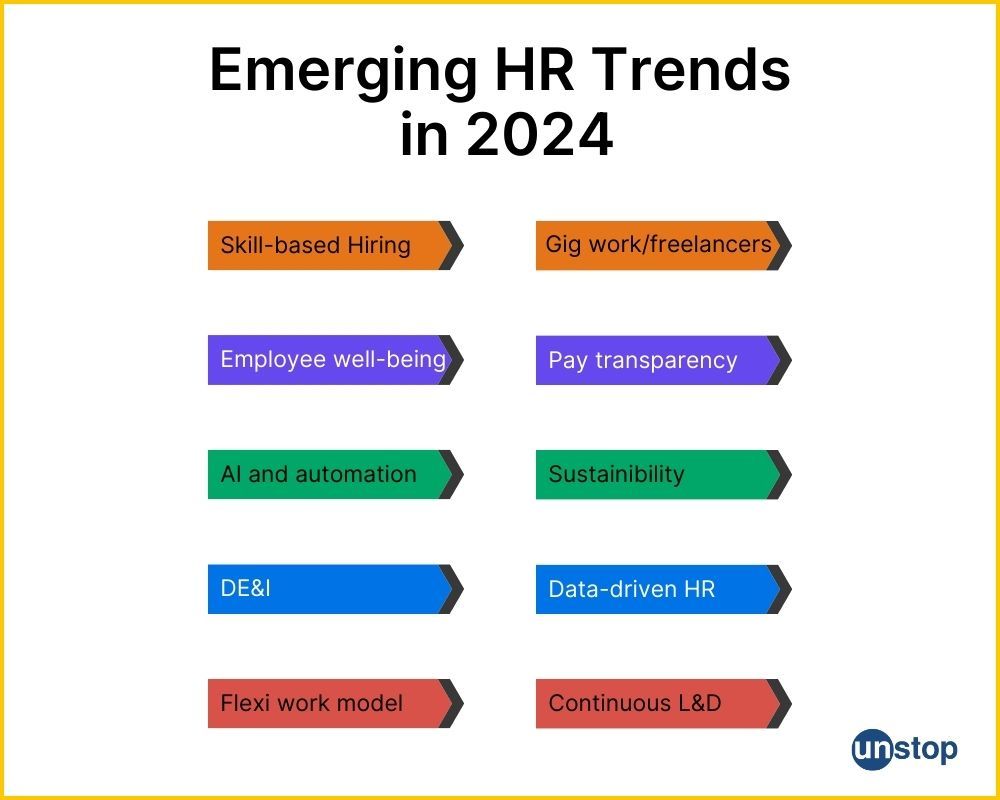
It’s no longer about finding the most qualified candidates, but rather about finding the most skilled candidates and retaining them by investing in both their well-being and development.
For organizations, this means getting on board with flexible work arrangements, among other changes. For employees, it means looking at AI as a tool to learn, not a force to compete with! In the midst of it all, creating a sustainable work environment shouldn’t just be a trend to jump on, but a basic requisite of any workplace in 2024.
Let’s take a look at the key emerging trends in HR in 2024:
1. Skill-based hiring:
- Growing focus on skills and competencies over traditional qualifications.
- Use of skills assessments and simulations to identify the right talent.
- Increased adoption of internal mobility and upskilling programs.
2. Improving Employee experience, engagement and overall well-being:
- Prioritization of holistic employee well-being programs, with a renewed emphasis on mental health awareness and providing support resources.
- Creating an engaging employee experience throughout the employee lifecycle.
- Personalized career development plans and feedback mechanisms.
- Recognition and rewards programs to boost morale and motivation.
3. AI and automation in HR:
- Automation of routine tasks like recruitment, payroll, and performance management.
- Use of AI for talent analytics, candidate matching, and personalized learning.
- Ethical considerations for HR professionals.
4. Diversity, Equity, and Inclusion (DE&I):
- Continued focus on building a diverse and inclusive workforce.
- Implementation of unconscious bias training and talent acquisition strategies.
- Addressing pay gaps and promoting equal opportunities for all genders and ethnicities.
5. Hybrid and remote work:
- The hybrid model (combination of office and remote work) likely to remain dominant.
- Technology investments to support remote collaboration and communication.
- Rethinking office spaces and policies to accommodate flexible work arrangements.
6. Gig economy and freelance work:
- Rise of the gig economy and freelance work creating new talent pools for companies.
- Need for clear policies and contracts to manage contingent workers.
7. Greater demand for transparency
- Transparency is the main demand - especially for the rising Gen Z workforce.
- From job descriptions to in-house promotions, HRs will need to provide clear information at every stage.
- Pay transparency and pay equity will need to take center stage.
8. Heightened Focus on Sustainability:
- Increased focus on environmental, social, and governance (ESG) issues in HR practices.
- Attract and retain talent who share their commitment to sustainability and social responsibility.
9. Data-driven HR:
- Data analysis to inform HR decisions and strategies.
- Tracking key metrics like employee engagement, retention, and productivity.
- Use of HR analytics tools for better decision-making.
10. Continuous learning and development:
- Reskilling and upskilling programs to help traditional employees adapt to changing work models.
- Micro-learning and personalized learning platforms gaining popularity.

Skill-Based Hiring
Skill-based hiring focuses on assessing and evaluating candidates based on their specific skills and abilities rather than solely relying on traditional qualifications or experience.
The idea is to prioritize candidates who possess the necessary skills to perform the job effectively. This trend is driven by the recognition that skills can be developed and honed through various means, such as online courses, certifications, or even practical experience.
According to the 2023 PwC Global Workforce Hopes & Fears Survey, there are clear indicators that companies are overlooking talent because over one-third (35%) of workers stated having skills that aren’t apparent through their job histories or resumes.
Thus, by adopting skill-based hiring practices, companies can tap into a wider pool of talent, including ‘hidden talent’ i.e. skilled individuals who may not have the traditional qualifications. Traditionally, such individuals have either been offered lower pay, or contractual work with limited working hours. This also allows organizations to consider candidates from diverse backgrounds who may bring unique perspectives and ideas to the table.
Skill-based hiring can also help reduce hiring bias through objective assessments, such as skills assessments or performance tests, rather than subjective factors like educational pedigree or personal connections.
Did you know? Research published by World Economic Forum, in collaboration with PwC, found that creating skills-first labour markets could help more than 100 million people worldwide get better jobs.
Prioritizing Employee Experience, Engagement & Well-being
Employee Experience and Engagement Taking Center Stage
In an article on employee experience, Harvard Business Review stated that even though 49% of C-suite executives believed their company excels at acting on employee feedback, only 31% of workers agreed. It’s disparities like these that impact employee engagement.
Employee experience and engagement is not just an emerging trend in HR in 2024 but a key focus area for overall growth. Organizations recognize that happy and engaged employees are more productive and loyal. As per Gallup's 2023 State of the American Workplace report, highly engaged teams are 21% more productive, 27% less likely to leave their jobs, and have 59% lower turnover rates.
To enhance EX, companies will invest in initiatives such as personalized development plans, wellness programs, mentorship opportunities, and regular feedback channels. Fostering a positive company culture through diversity and inclusion efforts will be crucial for attracting top talent.
Comprehensive Employee Wellness Programs
While remote work offers convenience, it also makes it difficult to achieve work-life balance with 80% of employees experiencing work-related stress, while 50% suffering from burnout, as per CXOToday. Thus, in 2024, organizations will focus on providing holistic wellness programs that address various aspects of employee health.

Image credit: Freepik
These programs may include fitness classes or gym memberships, mindfulness training sessions, access to counseling services, or workshops on stress management techniques. These initiatives seek to create an environment where employees can effectively manage their professional responsibilities while also having time for personal activities and relaxation.
This emphasis on employee engagement and well-being aligns with the growing recognition that happy and healthy employees contribute to a more productive workforce.
AI-Empowered Workforce Evolution and Its Impact
According to McKinsey’s 2023 State of Organizations report, organizations used an average of 3.8 AI capabilities (eg, natural-language generation, computer vision) in 2022, double the 1.9 used in 2018. The adoption of AI will only accelerate in 2024.
One of the key areas where AI will have a significant impact is in streamlining recruitment and talent management processes. With the help of AI-powered algorithms, organizations can efficiently identify top candidates through a large volume of resumes and match them with suitable job positions. This saves time, giving HR professionals time to focus on strategic initiatives.
The integration of AI technologies into HR processes brings numerous benefits such as increased efficiency, enhanced employee experiences, and reduced administrative burdens. However, organizations need to approach these advancements with caution by ensuring ethical considerations are taken into account when implementing AI solutions.
Taking Diversity, Equity, and Inclusion Beyond Mandates
McKinsey’s State of Organization 2023 report perfectly highlights the current state of DEI at the workplace. Per the report, less than half (47%) of employees stated that they had the infrastructure to realize their DEI aspirations. The reason DEI is still an emerging trend in HR in 2024 is that now is the time when it transitions from being just a corporate mandate to becoming a part of the workplace fabric.
Diversity metrics are one way to drive accountability and measure progress. Still, the need of the hour is for HR to collaborate with other leaders to develop strategies that promote diversity at every level of the company. This includes implementing inclusive hiring practices, providing training on unconscious bias, and cultivating an environment where everyone feels valued and respected.
Hybrid and Remote Work
Remote work is no longer a novelty brought on by the COVID-19 pandemic but rather the norm. This trend is expected to continue into 2024.

Image credit: freepik
As companies continue to embrace hybrid and remote work, technology investments will play a crucial role in facilitating collaboration and communication among remote teams. With the shift towards remote work, the traditional concept of office spaces will need to be rethought.
Instead of relying on physical office spaces, organizations need to invest in digital tools and platforms that enable seamless virtual collaboration. This will require a focus on technologies such as video conferencing, project management software, and cloud-based document sharing to ensure effective remote teamwork. By leveraging technology, companies can create a flexible and productive work environment that supports remote work arrangements.
Did you know? In its State of Organizations 2023 report, McKinsey listed “true hybrid” as one of the ten most significant shifts facing organizations today. More than 80% of employees who worked in hybrid models between 2020-22 want to retain them, stated McKinsey.
Embracing the Gig Economy and Blended Workforce
The emergence of the gig economy and blended workforce is one of the key trends that HR professionals need to embrace in 2024. Companies are increasingly relying on freelancers, contractors, and gig workers to meet their business needs. This shift towards a more flexible workforce brings both opportunities and challenges for HR practitioners.
HR departments will need to adapt their talent acquisition strategies to include external talent from the gig economy. This means leveraging social media platforms, hiring challenges, and specialized job portals to connect with potential candidates outside of traditional hiring channels. It also involves building relationships with freelancers and contractors who could bring unique skills and perspectives to the organization.
Transparent HR Practices
An emerging trend in HR in 2024 will be transparent HR practices to cater to employee expectations and attract better talent.
Accurate Job Descriptions
In 2024, job seekers and employees are increasingly seeking organizations that are open and honest about the expectations and requirements of each position. Accurate job descriptions are crucial in attracting and retaining top talent, as they provide candidates with a clear understanding of the role and its responsibilities. This helps candidates know whether they are the right fit for the position and allows them to align their skills and qualifications accordingly.
Pay Transparency
There’s also rising demand for job descriptions where salary information or pay range is clearly stated. As per the People at Work 2023: A Global Workforce View report, for 61% of people, the most important factor in a job is salary. An article by SHRM backs this, stating that 4 in 5 candidates wouldn't apply for roles without pay range information.
Not just for hiring, information about pay equity and salary structure can even impact retention rates. Per compensation software firm Payscale, “pay transparency decreases intent to quit by 30% when analyzed in isolation.” Simply put, transparent salary structures help to build trust and ensure that employees feel they are being compensated fairly for their work.
Overall, the demand for transparent HR practices is on the rise in 2024. Accurate job descriptions, clear rules for in-house promotions, and fair pay equity and salary structures are essential elements that job seekers and employees are seeking from organizations.
Climate Change Adaptation in HR Practices
The emerging trends in HR in 2024 reflect the growing concern about climate change among employees and the consequent need to prioritize sustainability initiatives.
Employees, especially younger generations, are increasingly concerned about environmental and social issues. They expect their employers to align their values with sustainability practices. Companies that demonstrate commitment to sustainability attract and retain talent who value ethical and responsible business practices. Offering eco-friendly perks like green commuting options, sustainable food choices, and volunteering opportunities can demonstrate commitment to sustainability and attract talent.
Leveraging HR Analytics for Data-Driven Decisions

Image credit: Freepik
Predictive analytics will make a significant impact on HR practices. By leveraging data from various sources such as employee performance records, engagement surveys, and market trends, organizations can use predictive analytics models to make data-driven decisions related to workforce planning, talent development, and career progression.
Tracking employee turnover rates, engagement levels, training effectiveness, and other KPIs helps HR leaders identify improvement and allocate resources accordingly. For example, if the data shows a high turnover rate in a particular department, HR can investigate the underlying causes and implement targeted retention strategies.
Continuous Learning & Development to Improve Productivity
Rapid technological advancements and the dynamic nature of the business landscape have highlighted the importance of equipping employees with the tools to stay competitive.
Continuous learning and development programs provide employees with knowledge and skills enhancements, as well as keep them current with industry trends. This not only benefits the employees by boosting their confidence and job satisfaction but also helps organizations improve productivity and achieve their business goals.
The end goal for any organization should be developing a future-ready workforce. This means investing in employees’ growth and development. In other words, it’s not enough to hire for the skills employees currently have; it’s also important to nurture talent for the future.
The Office Buzz in 2024
Naturally, the emerging trends in HR in 2024 will be impacted by office trends. If 2023 was about rage applying, quiet quitting and moonlighting, 2024 is set to welcome coffee badging, quiet cutting and lazy girl jobs. Confused? Take a look at the workplace trends on the rise:
Coffee Badging
With offices transitioning from a remote work environment to a hybrid working model, coffee bashing has made an appearance. Coffee badging is the practice of turning up at the workplace for a few hours to check in with your colleagues, report to managers, and ‘share a cup of coffee’, before heading back to work from home - which is considered to be a more productive environment.

Image credit: Freepik
Grumpy Stayer
As the term suggests, grumpy stayer refers to individuals who are dissatisfied with their work but unable to shift or quit. It could include highly skilled workers who feel they are either not valued at work or don’t have the potential to learn and grow.
Quiet Cutting
This is a trend slowly gaining prevalence in workplaces. It’s a practice of shifting or reassigning employees to different departments instead of letting them go. It appears to be a stop-gap measure to layoff but in some cases, reassigning departments has also served an employee well in finding a role more suited to their skills and interests. This approach also helps organizations fulfill roles without investing in hiring or sourcing.
Lazy Girl Jobs
Don’t be deceived by the name! Lazy girl jobs are not for lazy people but rather are roles that prioritize work-life balance. The idea is to chase an equilibrium between financial compensation, work requirements, and time for self. The term generated on TikTok, and naturally, finds more favour with Gen Z - though it holds a lesson for employees of all generations and even employers. What’s the lesson? That work-life balance can no longer be ignored.
Career Cushioning
With the rising economic uncertainty, and the constant news about layoffs, career cushioning has become the go-to approach for employees. It’s the practice of investing time and effort in building a plan B. This could include networking within the industry, undertaking courses to upskill, or building a portfolio of personal work to showcase your skills. It all comes down to strategic career planning.
Bottom Line - HR Operating Model Needs A Shift
Overall, emerging trends in HR for 2024 highlight the importance of shifting traditional operating models towards enhanced collaboration to drive organizational success. This means developing agile HR models that prioritize cross-functional collaboration, with HR working as a strategic partner rather than in silos. By breaking down silos and fostering collaboration, organizations can leverage diverse perspectives and expertise to drive innovation and improve overall performance.
Suggested Reads:
- HR Tips 2024 For Mastering Employee Management
- Business Acumen: What Is It & How To Develop It In Your Employees
- Transforming Hiring Landscape - Harnessing AI And ML For Talent Acquisition
- Succession Planning: A Comprehensive Guide for HR Professionals
- Gamified Recruitment For Engaging And Assessing Top Talent
I’m a reader first and a writer second, constantly diving into the world of content. If I’m not writing or reading, I like watching movies and dreaming of a life by the beach.
Login to continue reading
And access exclusive content, personalized recommendations, and career-boosting opportunities.
Subscribe
to our newsletter
Blogs you need to hog!
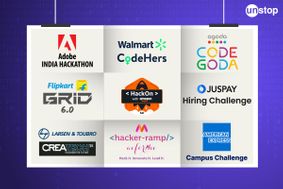
Organize Hackathons: The Ultimate Playbook With Past Case Studies

What is Campus Recruitment? How To Tap The Untapped Talent?
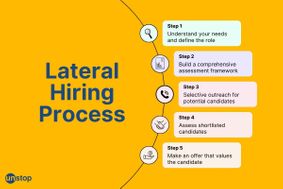
Lateral Hiring: A Complete Guide To The Process, Its Benefits, Challenges & Best Practices
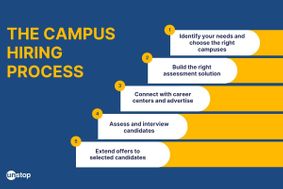








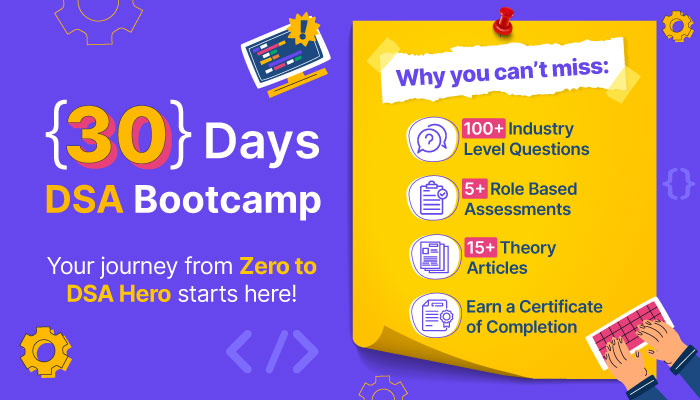



Comments
Add comment